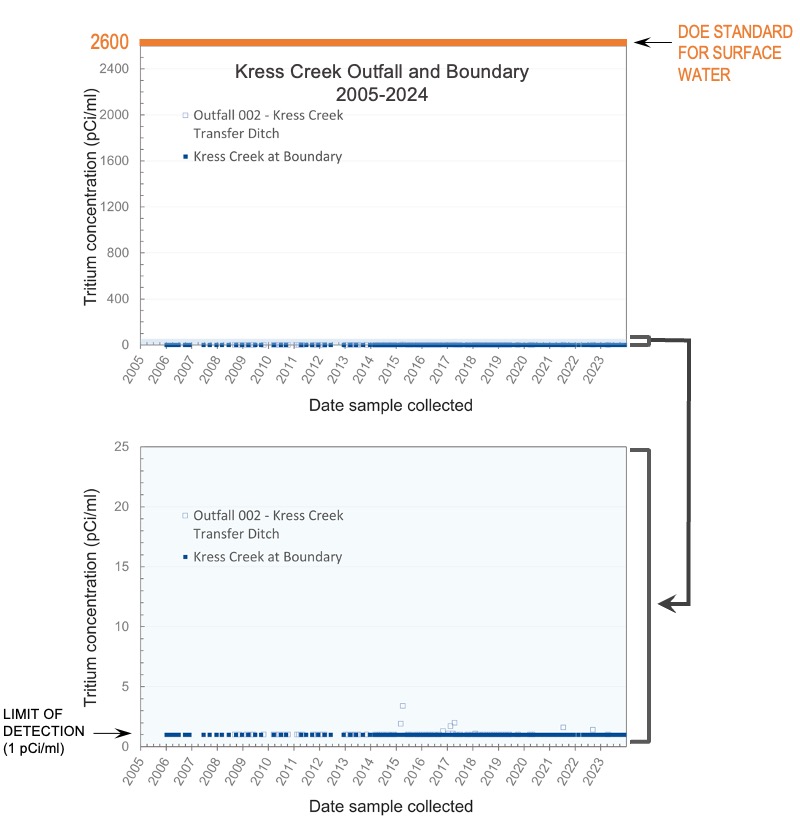Kress Creek results

This graph (click for larger version) shows the levels of tritium in Kress Creek between operational waters and the site boundary since 2005. To date, Fermilab has not detected tritium leaving the site boundary in Kress Creek. The detection limit is one picocurie per milliliter (see footnote).
Increased monitoring began on Kress Creek following detection of low levels of tritium in Indian Creek in November 2005. State of Illinois agencies have taken water samples from Indian Creek in the past. Comparing those results with Fermilab's results for Indian Creek confirmed the accuracy of Fermilab's measurement system. Fermilab monitors discharge to Kress Creek at a state-permitted National Pollutant Discharge Elimination System (NPDES) outfall. Outfalls are flow-monitoring points where operational waters flow into waters of the state (such as Kress Creek). Monthly results are reported to Illinois EPA and have been included in the graphs. Outfall discharges combine with non-operational flow in Kress Creek before leaving Fermilab, lowering the concentration below the detection limit.
The levels of tritium measured in the Fermilab cooling ponds and in Kress Creek are well below federal water standards for tritium. Fermilab continues to monitor the ponds and creeks on its site and take steps to keep the levels of tritium as low as reasonably achievable.
Fermilab will continue to display Kress Creek monitoring results on this page. A frequently-asked-questions page provides more information, and we have posted an aerial view of Kress Creek as well.
About the graph: A symbol appears on every day in which a sample has been taken and analyzed. Samples with no detectable level of tritium are represented by a symbol on the line at the limit of detection (1 pCi/ml).
Footnote: A picocurie is the unit used to specify how many tritium particles in a water sample decay into helium particles each second. Standard tests can detect levels of tritium in water that are larger than about 1 picocurie per milliliter. The Department of Energy surface water standards specify a limit of 2600 picocuries per milliliter.
- Last modified
- 03/18/24
- email Fermilab

